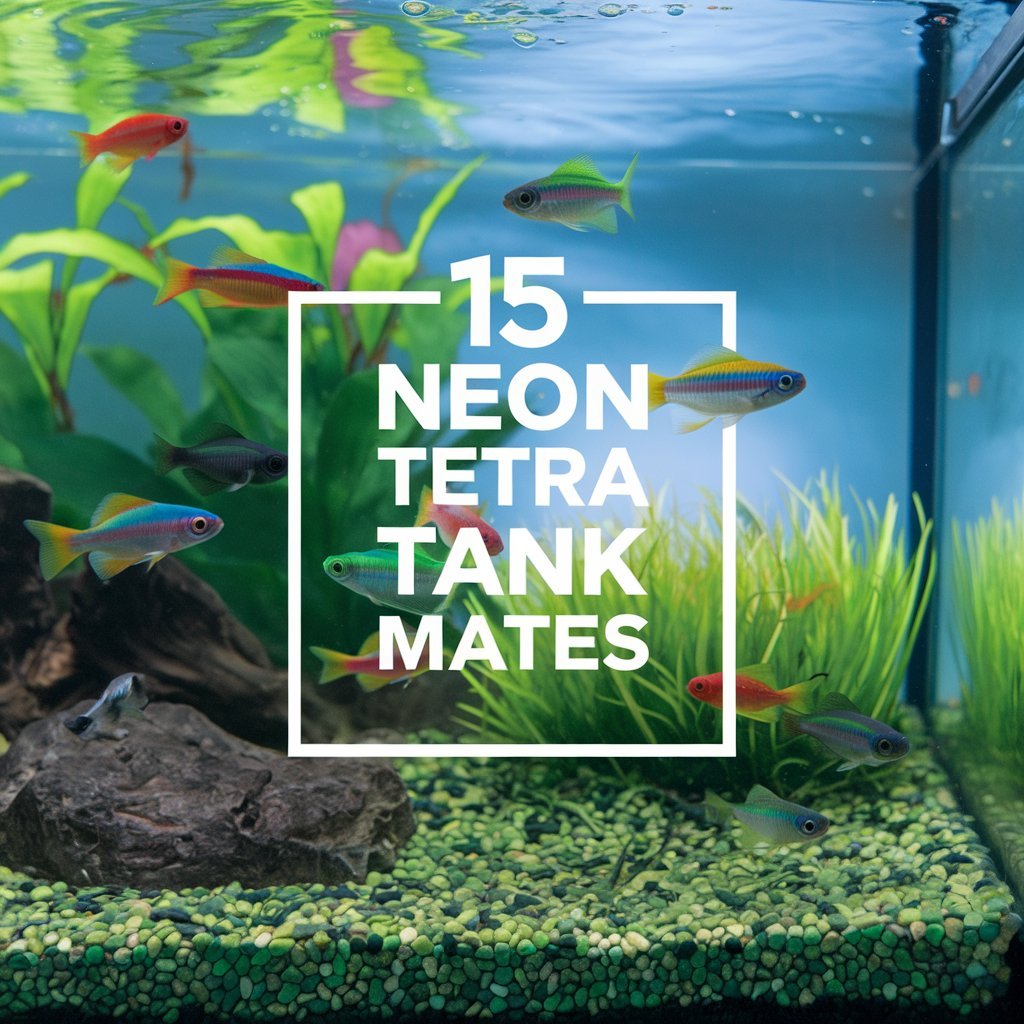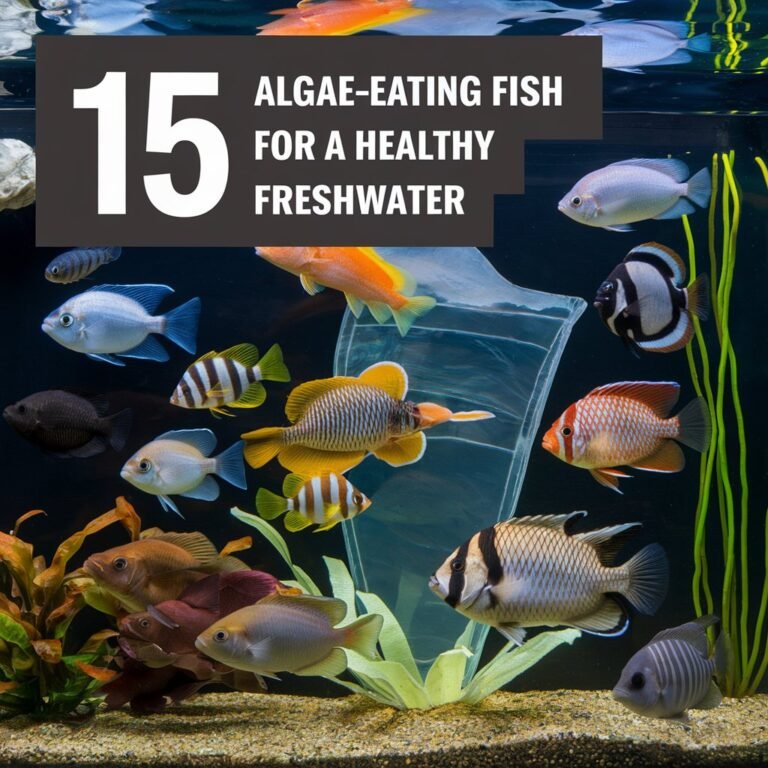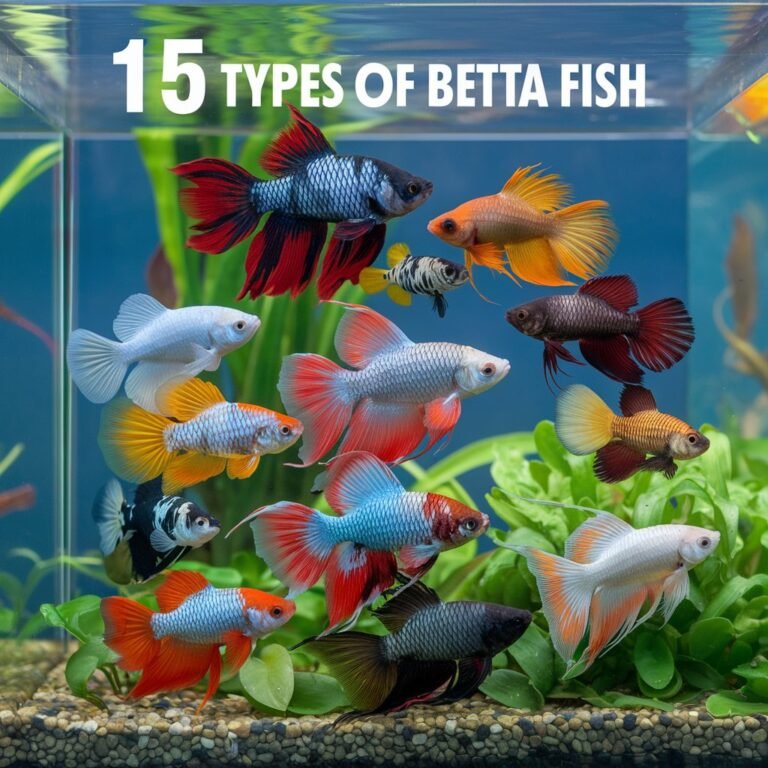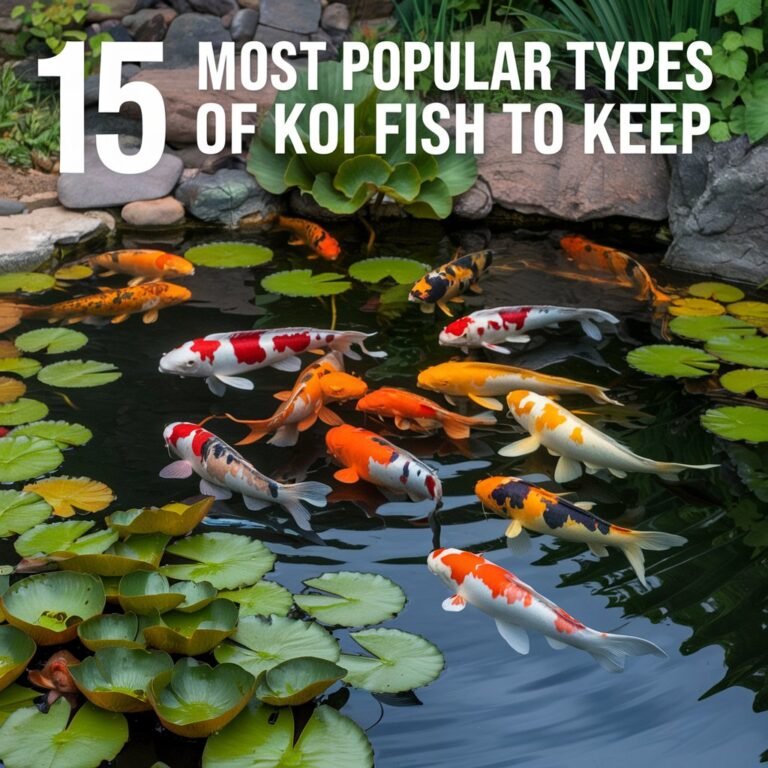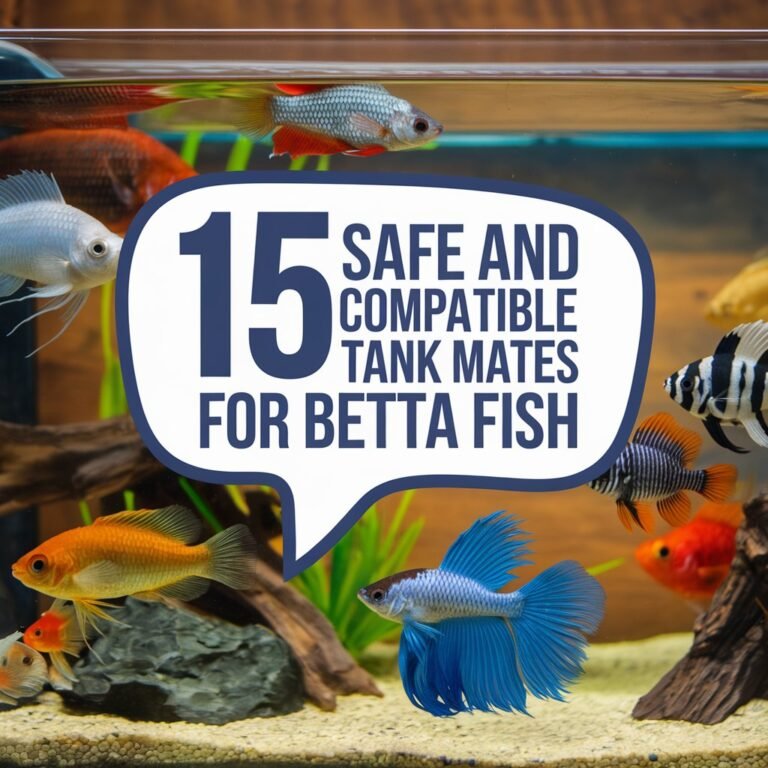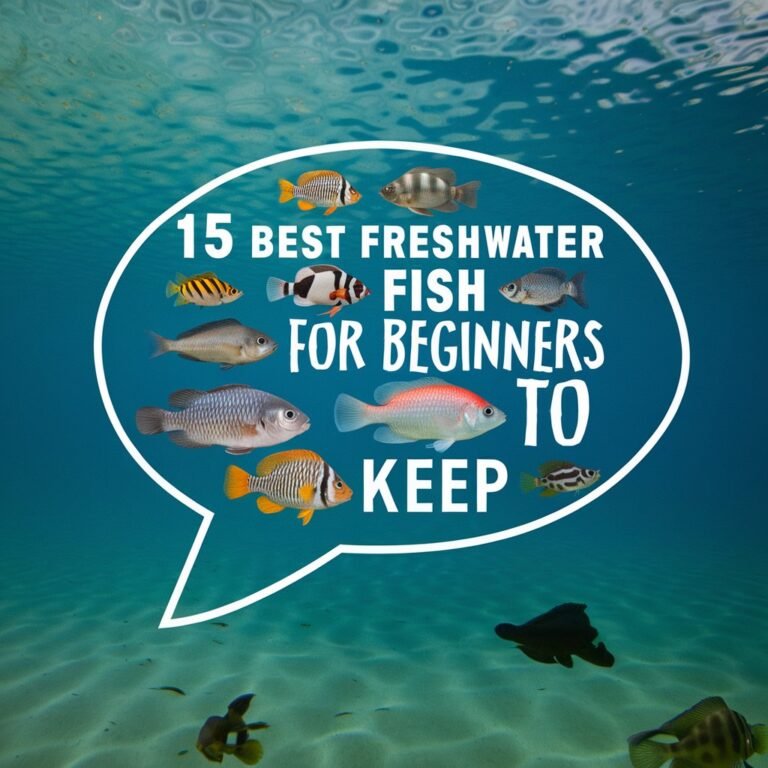15 Neon Tetra Tank Mates for a Harmonious Aquarium
You’ve finally set up your neon tetra tank, and now you’re looking for the perfect tank mates to create a harmonious aquarium. Choosing the right companions can be overwhelming, especially with so many species to ponder.
When selecting tank mates, you’ll want to prioritize species that thrive in similar water conditions and have peaceful temperaments. Some popular options include schooling fish like Harlequin Rasboras and Lemon Tetras, as well as bottom dwellers like Corydoras Catfish. But which ones will work best for your specific setup, and what other options are out there?
In A Nutshell

- Harlequin Rasboras and Lemon Tetras are ideal tank mates for Neon Tetras, requiring similar water temperature and pH ranges.
- Zebra Danios, Cherry Barbs, and White Cloud Mountain Minnows are other schooling fish that can coexist with Neon Tetras.
- Corydoras Catfish and Pygmy Corydoras are suitable bottom-dwelling tank mates that can thrive in the same water conditions.
- Amano Shrimp can be a great invertebrate addition, requiring plenty of hiding places and plants for them to graze on.
- Dwarf Gouramis and Honey Gouramis can also be compatible tank mates, but require a minimum of 10 gallons and careful monitoring.
Harlequin Rasboras
A well-suited tank mate for neon tetras, the harlequin rasboras is an attractive and peaceful species that can be easily integrated into a community aquarium.
You’ll find that they thrive in schools, so it’s best to keep them in groups of at least six to replicate their natural schooling behavior. This behavior helps to distribute aggression and stress among the group, making them a great choice for a community tank.
When choosing a harlequin rasbora, you should consider the natural Rasbora habitat.
They originate from slow-moving streams and rivers in Southeast Asia, where the water is warm and slightly acidic to neutral. To replicate this environment, you should maintain a water temperature between 72°F and 82°F and a pH range of 6.0 to 7.5.
Providing plenty of plants and open swimming space will also help to make your harlequin rasboras feel at home. By meeting their environmental needs and providing a suitable school size, you’ll be able to enjoy the beauty and tranquility of these fascinating fish in your aquarium.
With proper care, they can live up to 5-7 years, making them a long-term companion for your neon tetras.
Lemon Tetras
When adding lemon tetras to your neon tetra community, you’re introducing another small, peaceful schooling fish that shares similar requirements and characteristics.
Lemon tetras thrive in well-oxygenated, slightly acidic water with temperatures between 72°F and 82°F, making them an excellent match for neon tetras. In respect to tank size, a minimum of 10 gallons is recommended, as this will provide ample space for both species to school and explore.
Lemon tetra behavior is generally calm and social, with individuals often swimming together in large schools.
They’re active swimmers, so be prepared to provide plenty of open space for them to dart and weave. When it comes to feeding, lemon tetras are omnivores and will appreciate a varied diet that includes high-quality flakes, pellets, and live or frozen foods.
Breeding lemon tetras can be a fun and rewarding experience.
They’re egg-layers, and will typically spawn in the morning hours. To encourage breeding, provide a separate breeding tank with plenty of plants and a temperature range of 78°F to 82°F. The female will lay her eggs among the plants, and the male will fertilize them shortly after.
Corydoras Catfish
You’re adding an excellent bottom-dweller to your neon tetra community by introducing corydoras catfish, which will efficiently clean up food debris from the substrate while promoting a balanced ecosystem.
A group of six or more corydoras catfish is ideal, as they’re social creatures that thrive in schools. Cory catfish behavior is quite fascinating, as they’re known to form small groups and work together to clean the substrate.
They’re also diurnal, meaning they’re active during the day and rest at night.
When choosing corydoras catfish, look for species that are compatible with your neon tetras, such as Corydoras aeneus or Corydoras trilineatus.
To encourage breeding, provide a separate breeding tank with a temperature range of 72-82°F (22-28°C) and a pH of 6.5-7.5. Corydoras breeding tips include simulating a rainy season by increasing water flow and providing plenty of hiding places for the eggs.
The female corydoras catfish will lay around 20 eggs, which will hatch after 3-4 days. With proper care and attention, corydoras catfish can thrive in your neon tetra community, adding a unique and interesting dimension to your aquarium.
Dwarf Gouramis
Dwarf gouramis can be an intriguing addition to your neon tetra community, offering a striking contrast in appearance and behavior to the sleek, schooling tetras.
These small, peaceful fish come in a variety of color variations, including blue, honey, and powder blue, adding visual interest to your aquarium.
When considering tank compatibility, keep in mind that dwarf gouramis prefer warmer temperatures, typically between 72-82°F (22-28°C), and slightly acidic to neutral water pH (6.0-7.5).
In terms of tank size, a minimum of 10 gallons is recommended to accommodate the territorial nature of dwarf gouramis.
A well-planted tank with plenty of hiding places and visual barriers will also help to reduce aggression.
As a general rule, it’s best to keep only one dwarf gourami per tank, as they can be territorial and may fight with each other.
By providing a suitable environment and compatible tank mates, you can create a harmonious aquarium that showcases the unique characteristics of both your neon tetras and dwarf gouramis.
With proper care, these fish can thrive and add beauty to your aquarium.
Zebra Danios
Among the many species that can be paired with neon tetras, zebra danios are a popular choice due to their active, hardy nature and ability to thrive in a variety of water conditions.
They’re an excellent match for neon tetras, as they’re both active swimmers and can be found in the middle to upper water column. Zebra danios are also a schooling species, which makes them well-suited to community tanks.
When kept in schools of six or more, they’ll display their natural schooling behavior, creating a dynamic and engaging display.
In terms of water requirements, zebra danios are relatively adaptable. They can thrive in water temperatures between 65-77°F (18-25°C) and pH levels between 6.5-8.5.
However, they do require a moderate water flow and should be kept in tanks with a minimum capacity of 10 gallons.
When paired with neon tetras, it’s vital to guarantee that the water parameters meet the needs of both species.
By doing so, you’ll create a harmonious and thriving aquarium environment that showcases the unique characteristics of both zebra danios and neon tetras.
With proper care, zebra danios can live for up to 5 years, making them a long-term addition to your aquarium.
Cherry Barbs
Cherry barbs offer another attractive option for neon tetra tank mates, sharing some similarities with zebra danios in respect to their active nature and ability to thrive in community tanks.
When you introduce cherry barbs to your neon tetra aquarium, you can expect them to form a peaceful schooling group, creating a mesmerizing display of movement and color. As a hardy species, cherry barbs are relatively easy to care for, tolerating a range of water conditions and temperatures between 72°F and 82°F.
You’ll appreciate the vibrant colors of cherry barbs, with their deep red hue adding a pop of color to your aquarium. These colorful companions are also prolific swimmers, effortlessly cruising the water column and providing endless entertainment.
To guarantee harmony in your tank, maintain a ratio of one male to three or four females, as dominant males can exhibit aggression. By providing plenty of hiding places and visual barriers, you can create a sense of security and reduce stress among your cherry barbs, allowing them to thrive in their new home.
With proper care, cherry barbs can be a beautiful and engaging addition to your neon tetra community.
White Cloud Mountain Minnows
When selecting tank mates for your neon tetras, considering the active and peaceful nature of White Cloud Mountain Minnows can be a great option.
These minnows are easy to care for and can thrive in a well-maintained aquarium with proper water parameters. They prefer water temperatures between 64°F to 75°F (18°C to 24°C) and pH levels ranging from 6.0 to 8.0.
As active swimmers, White Cloud Mountain Minnows are best kept in schools of at least six to eight individuals.
Their schooling behavior creates a stunning display of movement and color, adding visual interest to your aquarium. They’re also relatively small, reaching a maximum length of about 1.5 inches (3.8 cm), making them a great choice for smaller tanks.
In terms of compatibility, White Cloud Mountain Minnows are generally peaceful and can be kept with other peaceful species, such as neon tetras.
However, they may be too active for very slow-swimming or long-finned fish. By providing plenty of hiding places and open swimming space, you can create a harmonious environment for both your neon tetras and White Cloud Mountain Minnows to thrive.
Celestial Pearl Danios
Your neon tetras’ tank can greatly benefit from the addition of Celestial Pearl Danios, a species known for their striking appearance and peaceful demeanor.
These active swimmers thrive in groups, showcasing their impressive schooling behavior. To replicate this natural behavior, it’s recommended to keep them in schools of at least 6-10 individuals. By doing so, you’ll create a mesmerizing display of movement and coordination.
In terms of tank requirements, Celestial Pearl Danios are relatively easy to care for. They can tolerate a wide range of water temperatures, from 72°F to 82°F (22°C to 28°C), making them compatible with neon tetras.
However, they prefer softer water with a pH range of 6.5-7.5. To keep your Celestial Pearl Danios healthy and thriving, guarantee that your tank provides ample swimming space, with plenty of plants and open areas for them to explore.
Avoid keeping them with aggressive or fin-nipping species, as they can be sensitive to stress. With proper care and attention, Celestial Pearl Danios will add a beautiful and dynamic element to your neon tetra tank.
Their striking iridescent scales will shimmer and shine, creating a stunning visual display.
Honey Gouramis
Honey Gouramis can be an excellent addition to your neon tetra tank, providing a unique blend of beauty and personality.
As a peaceful, small species, they thrive in a well-planted aquatic habitat with plenty of hiding places and open swimming areas. When choosing Honey Gouramis as tank mates, consider their adult size, which can reach up to 2 inches in length.
They’re best kept in small schools or pairs, as they can be territorial.
To create a harmonious environment, guarantee your tank is at least 10 gallons, with a temperature range of 72-82°F (22-28°C) and a pH between 6.5-8.5.
Honey Gouramis are omnivores and require a balanced diet that includes a mix of live, frozen, and high-quality commercial foods.
As colorful companions, they’ll add a pop of yellow and orange hues to your tank.
When introducing Honey Gouramis to your neon tetra tank, do it slowly and under close observation to prevent any aggression.
With proper care and attention, Honey Gouramis can be a wonderful addition to your aquarium, bringing personality and beauty to your underwater world.
Pygmy Corydoras
Incorporating a bottom-dwelling species like Pygmy Corydoras can add an exciting dimension to your neon tetra tank, complementing the mid-water activity of the Honey Gouramis.
As a small schooling fish, Pygmy Corydoras thrive in groups of six or more, creating a mesmerizing display of synchronized movement along the substrate. These peaceful bottoms are easy to care for, tolerating a pH range of 6.0-7.6 and temperature of 68-82°F (20-28°C).
Pygmy Corydoras feed on decaying organic matter and algae, playing a crucial role in maintaining a balanced ecosystem.
When choosing Pygmy Corydoras for your neon tetra tank, consider their unique characteristics. They’re nocturnal, spending most of the day hiding in crevices or under decorations.
Providing plenty of hiding spots and open swimming areas will help them feel secure. You’ll also want to maintain a sandy or fine-grained substrate, as they’re sensitive to sharp or coarse surfaces.
Galaxy Rasboras
Although you’ve already established a fascinating mid-water dynamic with your neon tetras and Honey Gouramis, adding Galaxy Rasboras can further enrich the visual experience of your aquarium.
These peaceful, shoaling fish thrive in groups of six or more, showcasing their impressive schooling behavior. Galaxy Rasboras are a great match for neon tetras due to their similar water requirements, with temperatures between 72°F to 82°F (22°C to 28°C) and pH levels ranging from 6.0 to 7.5.
In terms of color, Galaxy Rasboras display a striking iridescent sheen, with color variations that shift depending on the angle of the light.
Their bodies are adorned with a mesmerizing pattern of silver, blue, and red hues. To fully appreciate their beauty, guarantee that your aquarium provides ample open swimming space for these active fish to roam.
Galaxy Rasboras are also relatively small, reaching a maximum length of 1.5 inches (3.8 cm), making them an excellent choice for community aquariums with neon tetras.
With proper care and housing, Galaxy Rasboras can be a stunning addition to your aquarium, creating a harmonious and visually striking environment that you’ll love.
Platy Fish
Diversity is key to creating a thriving community aquarium, and the addition of Platy Fish can effectively complement your existing neon tetras and other tank mates.
You’ll find that Platy Fish are peaceful, easy to care for, and come in a variety of color variations, including red, blue, yellow, and purple. These colors can add a pop of vibrancy to your aquarium, creating a visually appealing environment.
When introducing Platy Fish to your tank, it’s vital to examine their breeding habits. They’re livebearers, which means they give birth to live young rather than laying eggs.
This can lead to a rapid increase in population if not managed properly. To avoid overpopulation, you can separate the males from the females or maintain a ratio of one male to three or four females.
Platy Fish are also prolific breeders, with females capable of producing multiple broods throughout their lifespan. By grasping their breeding habits, you can take steps to maintain a balanced and harmonious aquarium ecosystem.
With proper care and management, Platy Fish can thrive in your community aquarium, providing a beautiful and engaging display.
Amano Shrimp
The Amano shrimp, a species of freshwater shrimp native to Japan and Taiwan, can be an excellent addition to a neon tetra tank, given its peaceful nature and compatibility with these fish.
You’ll find that Amano shrimp behavior is primarily focused on scavenging for food and algae, making them a great choice for a community tank.
They’re also skilled at hiding and can be quite entertaining to watch as they dart in and out of plants and decorations.
When it comes to Amano shrimp care, you’ll want to guarantee that your tank has plenty of hiding places and plants for them to graze on.
Amano shrimp are sensitive to water quality, so regular water changes and a balanced diet are vital.
They thrive in temperatures between 68-82°F (20-28°C) and pH levels between 6.0-8.0.
You can keep them in small schools, but be sure to provide enough space and resources for each individual.
With proper care, Amano shrimp can live for up to 3-5 years, making them a great long-term addition to your neon tetra tank.
Otocinclus Catfish
If you’re looking for another peaceful and algae-eating addition to your neon tetra tank, consider Otocinclus catfish.
These freshwater wonders are perfect for a harmonious aquarium, as they’re gentle and won’t compete with your neon tetras for food.
Otocinclus catfish are small, peaceful bottom dwellers that thrive in schools, so it’s best to keep them in groups of at least six.
As herbivores, Otocinclus catfish feed on algae, biofilm, and plant matter, making them an excellent choice for a planted tank.
They’re also great for cleaning up algae from decorations and glass walls.
To keep them happy, provide plenty of hiding places, such as plants, rocks, and driftwood.
A temperature range of 72-82°F (22-28°C) and pH between 6.5-7.5 is ideal for these catfish.
When introducing Otocinclus catfish to your tank, make sure to acclimate them slowly to prevent stress.
They’re sensitive to water changes, so regular monitoring of water parameters is vital.
With proper care, Otocinclus catfish can live up to 8-10 years, making them a long-term companion for your neon tetras.
Glowlight Tetras
One of the most visually appealing tank mates for neon tetras is the glowlight tetra. If you’re considering adding them to your aquarium, it’s vital to understand their behavior and habitat requirements.
With regard to Glowlight tetra behavior, these fish are known for being active, social creatures that thrive in groups of six or more. They’re a mid-swimming fish that don’t bother their tankmates and aren’t territorial.
To accommodate them, make certain you provide ample open space and create current flows with strong filtration. For Glowlight tetra habitat requirements, provide open, spacious environments that offer few obstacles to facilitate a flow that aids movement and rest.
Frequently Asked Questions
Can Neon Tetras Be Kept With Fin-Nipping Fish Species?
You’ll want to avoid keeping neon tetras with fin-nipping species, as they can be quite aggressive. Instead, pair them with peaceful neighbors like harlequin rasboras or ottos, ensuring a harmonious coexistence in your aquarium.
How Often Should Tank Water Be Changed for Neon Tetras?
You should change your tank water every 1-2 weeks, performing regular water testing to guarantee ideal conditions. As part of aquarium maintenance, replace 10-20% of the water to maintain stability and promote a healthy environment.
Are Neon Tetras Compatible With Cold-Water Aquarium Fish?
You’re considering cold-water aquarium fish, but are neon tetras compatible? Unfortunately, they aren’t ideal for cold water. Neon tetras thrive in warm temperatures, making them unsuitable companions for cold-water fish like Shubunkin.
Can Neon Tetras Be Kept in a Small Aquarium Tank?
You can keep neon tetras in small aquarium tanks, but consider a minimum 10-gallon capacity, plenty of aquatic plants, and a sufficient school size of 10-15 to promote their natural behavior.
Are Neon Tetras Prone to Any Specific Aquarium Diseases?
You’ll want to monitor your neon tetras for Freshwater diseases, as they’re prone to Fungal infections, particularly those caused by Ichthyophonus and Saprolegnia, which can be treated with antifungal medications and improved water quality.
FInal Verdict
When setting up your neon tetra tank, you’ve got 15 great options for harmonious tank mates. Choose from schooling fish like Harlequin Rasboras, Lemon Tetras, or Zebra Danios, which thrive in schools of six to ten.
Bottom dwellers like Corydoras or Otocinclus Catfish and small peaceful fish like Dwarf Gouramis or Platy Fish also work well. Invertebrates like Amano Shrimp add interest, and species like Glowlight Tetras complement neon tetras’ colors. Consider these compatible species for a thriving aquarium.

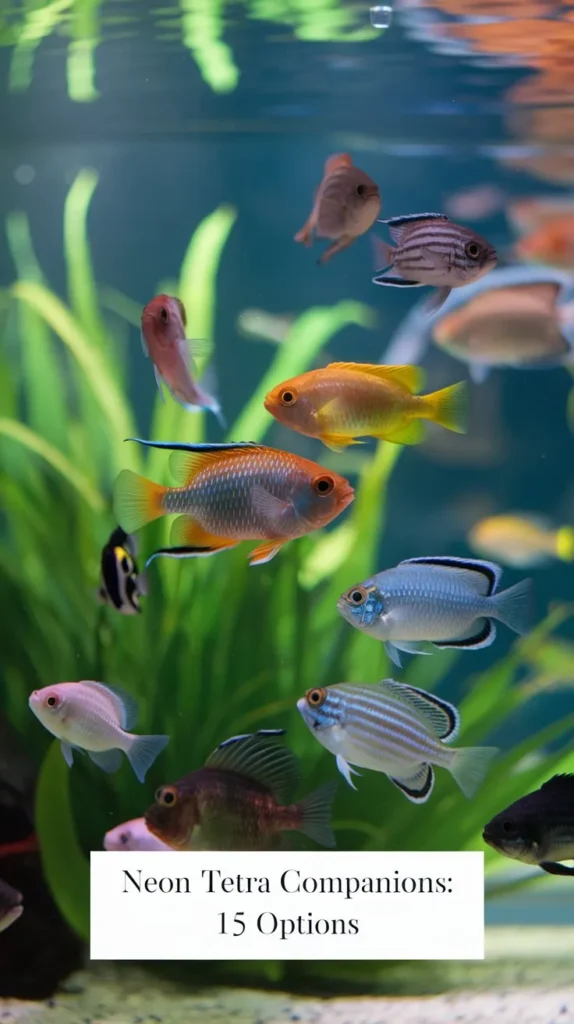
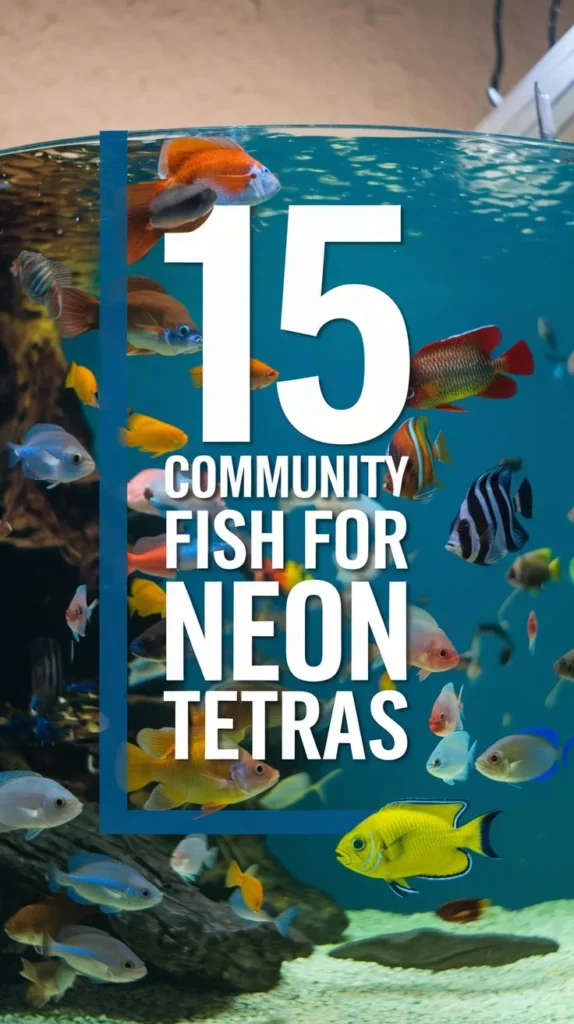
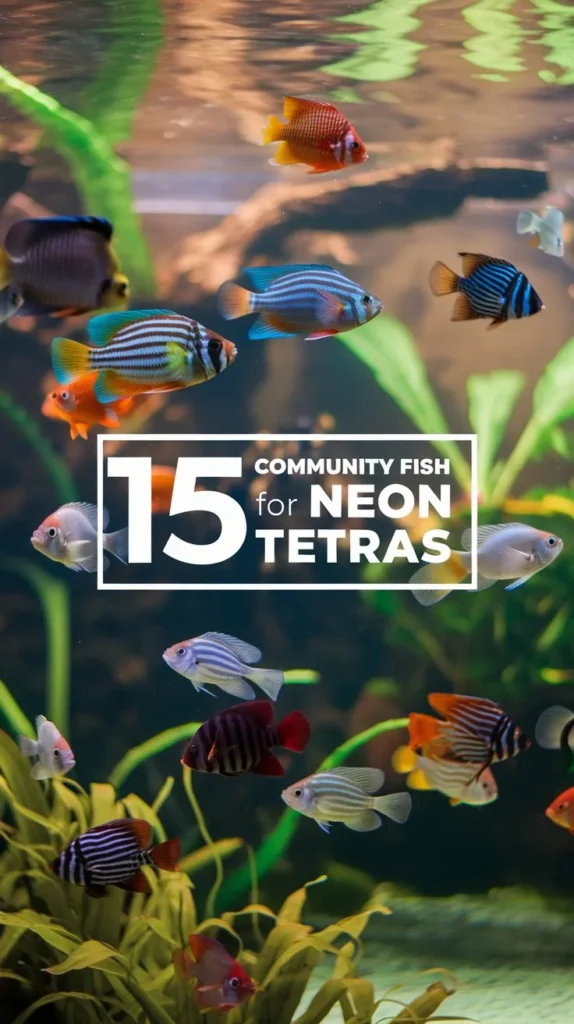
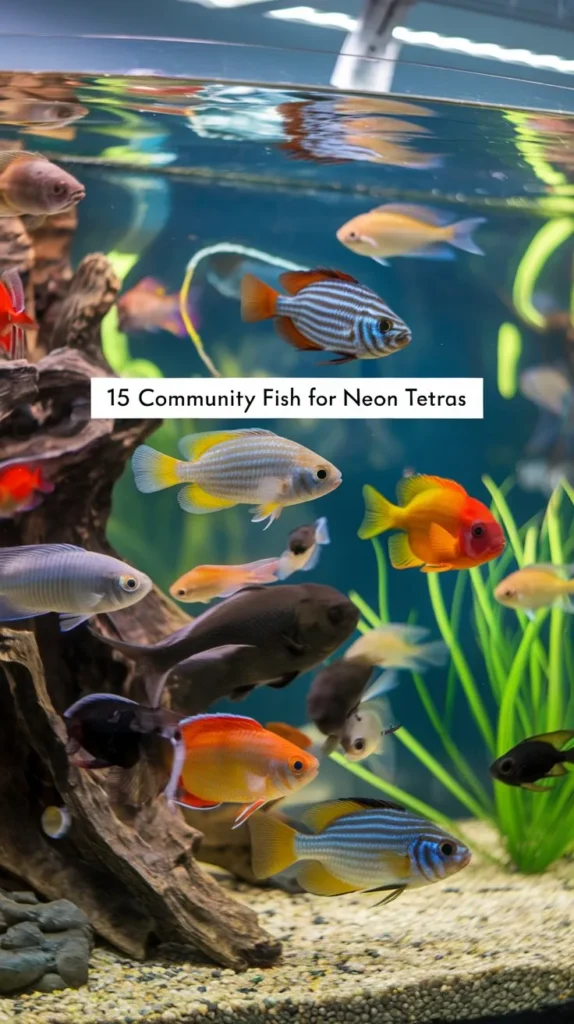
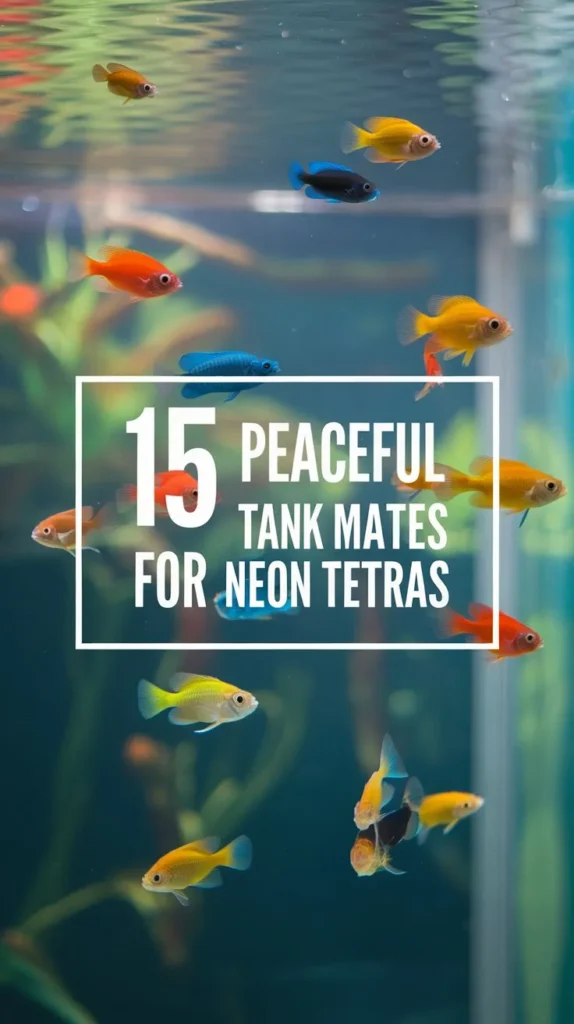
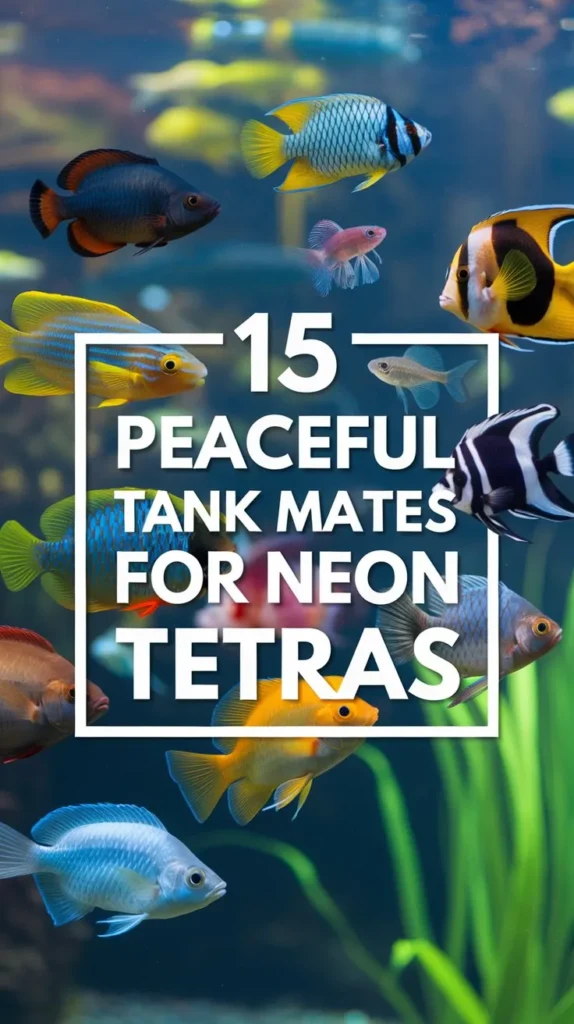

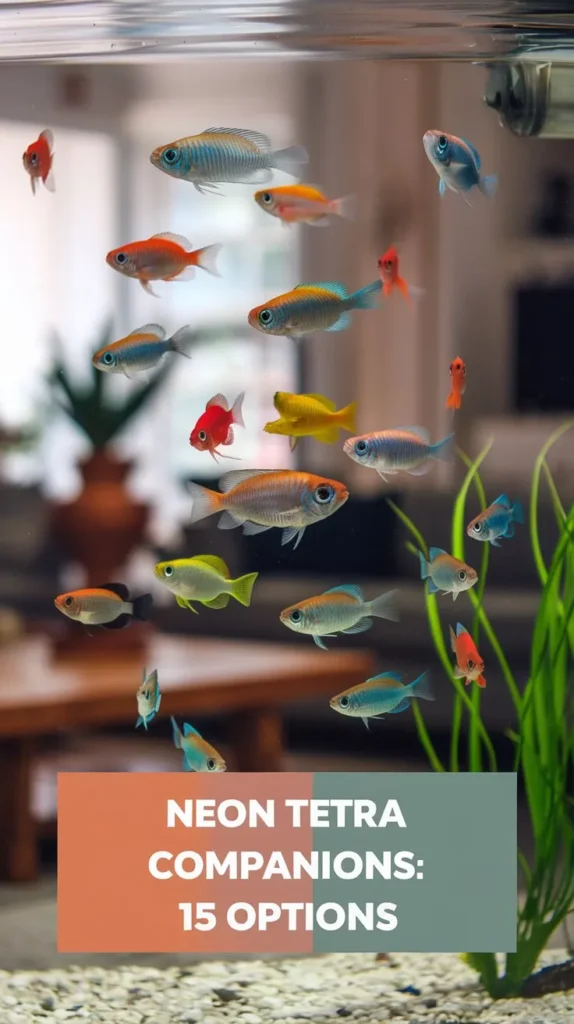
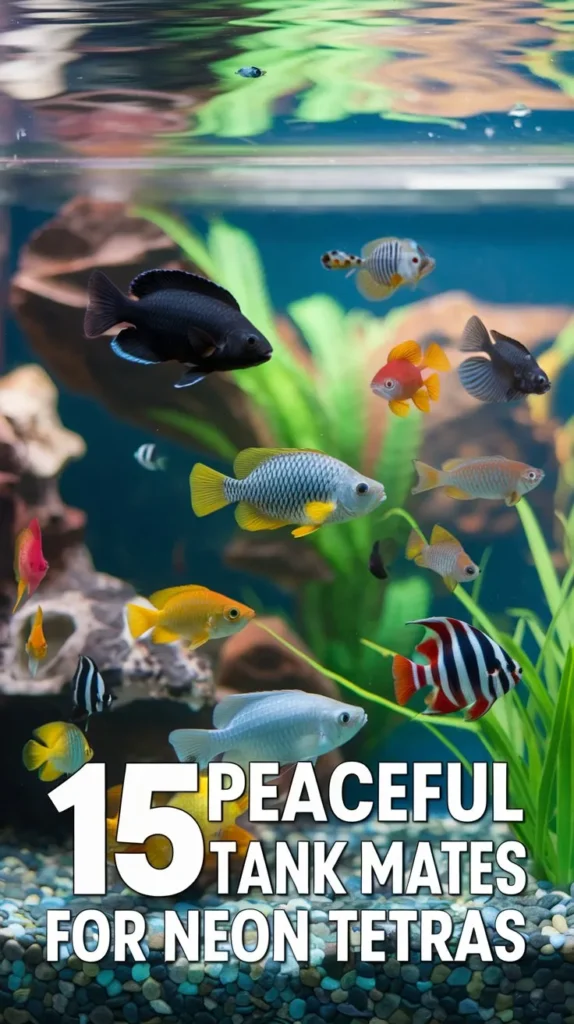
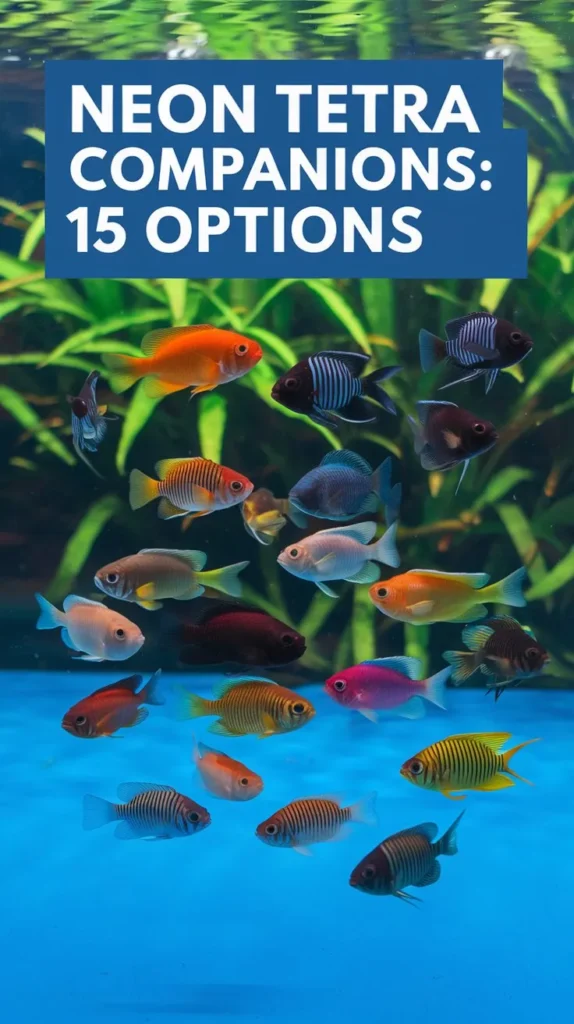
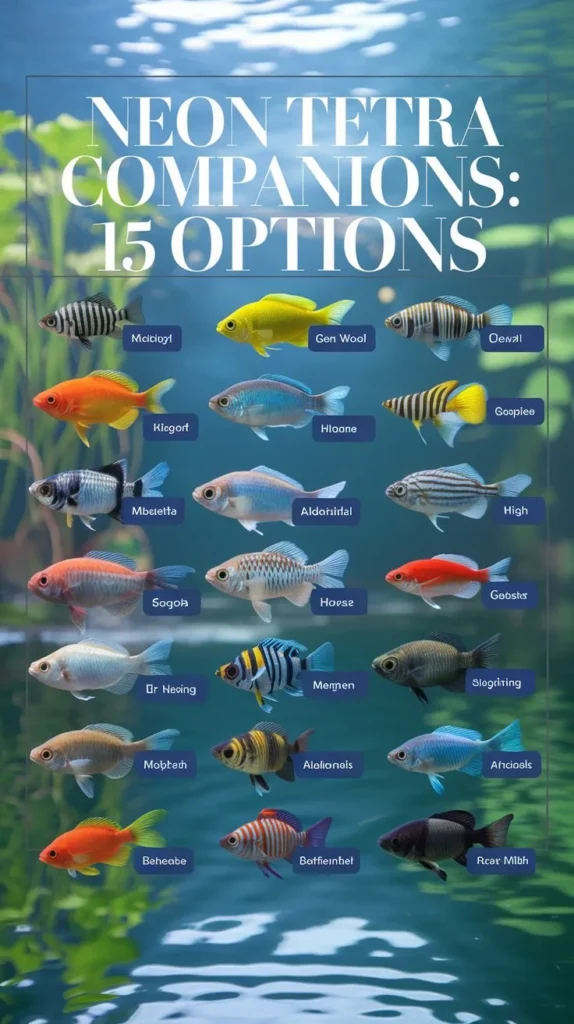

Hello, I’m Aria Cooper, the heart and soul behind Swimmy Buddies. As a devoted fish aficionado, I share my aquatic adventures and expertise to inspire your own underwater explorations. 🐠🌊

